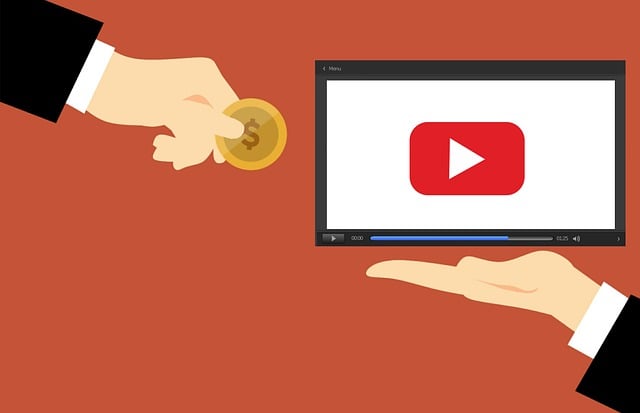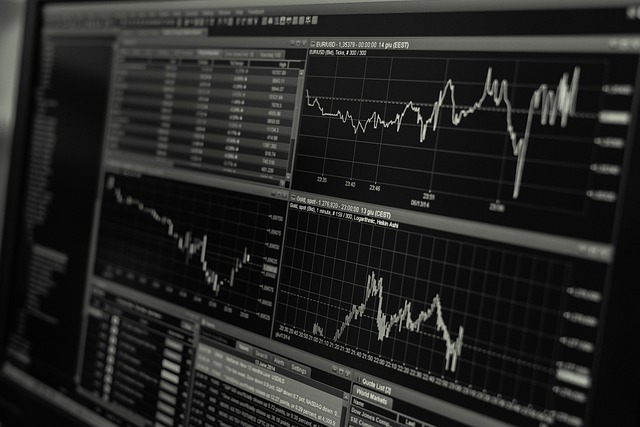How Much Are Trading Fees on Bybit: A Complete Guide to Costs, Reductions, and Examples
Author: Jameson Richman Expert
Published On: 2025-10-21
Prepared by Jameson Richman and our team of experts with over a decade of experience in cryptocurrency and digital asset analysis. Learn more about us.
How much are trading fees on Bybit is a common question for new and experienced crypto traders. This article explains Bybit’s fee structure, how fees are calculated, examples of real trades, ways to reduce costs, comparisons with other exchanges, and where to check up-to-date rates. Read on for actionable guidance and concrete examples so you can estimate what you’ll pay and keep more of your gains.

Quick overview: What you’ll learn
- The different fee types on Bybit (spot, derivatives, funding, deposit/withdrawal)
- How maker and taker fees work and how they affect your trades
- How VIP tiers, discounts, and BFT/margin can lower fees
- Step-by-step fee calculation examples
- Practical tips to minimize trading costs and improve net performance
- Where to verify the latest fees (official links and resources)
What are Bybit trading fees? (Types and definitions)
Bybit charges several kinds of fees that traders should understand before executing trades. These include:
- Spot trading fees — fees charged when you buy/sell cryptocurrencies on the spot market.
- Derivatives (perpetual and futures) trading fees — fees for opening and closing leveraged positions.
- Maker and taker fees — discounts (maker) or higher fees (taker) depending on whether you provide liquidity or take liquidity.
- Funding rates — recurring payments between longs and shorts on perpetual contracts (not a platform fee but a trade cost/credit).
- Deposit and withdrawal fees — fees for moving assets on and off the exchange (varies by asset and network).
- Other fees — margin interest (on isolated/cross margin loans), conversion fees, or fees for special products.
For the most accurate, live fee schedule consult Bybit’s official fee documentation — always verify before trading.
Useful reference: Bybit’s help center provides specific fee tables and policies (check Bybit’s fee or support pages for the latest numbers). For background on how exchanges use maker/taker models, see Investopedia’s explanation of the maker-taker fee model.
Maker vs Taker: How they influence your fees
Understanding the maker/taker distinction is essential for controlling trading costs:
- Maker orders add liquidity to the order book (limit orders resting on the book). Exchanges often reward makers with lower fees or rebates.
- Taker orders remove liquidity (market orders or limit orders that immediately match). Taker fees are usually higher because they consume liquidity.
Which one you are depends on order type and the state of the order book when your order executes. Use limit orders and carefully set prices to increase chances of being a maker and reduce fees.

Bybit fee structure explained (spot, derivatives, funding)
Spot trading fees
On spot markets, exchanges typically charge a percentage of the trade value. Spot fees are expressed as maker/taker rates, and they apply to both buy and sell orders. Many exchanges offer promotional or tiered rates depending on 30-day volume or holding platform tokens.
Example (illustrative): If Bybit’s spot fee were 0.10% maker / 0.10% taker (common industry baseline), a $1,000 trade would cost $1.00 at 0.10%.
Action: Use limit orders and place them within the book to try and be a maker.
Derivatives (perpetual & futures) fees
Derivatives fees often use different maker/taker levels and sometimes include negative maker fees (rebates). Perpetual contracts also have funding payments exchanged between counterparties — separate from exchange fees.
Example (illustrative): A derivatives fee schedule might show maker -0.025% (rebate) and taker 0.075%. That means if you add liquidity you could receive a small rebate (net negative fee), while taking liquidity costs more.
Funding rates
Funding is a periodic payment exchanged between long and short open positions on perpetual contracts. Funding is not a Bybit fee per se, but it’s a real cost (or credit) tied to holding leveraged positions. Funding rates vary over time and are driven by market demand.
Always check the current funding rate displayed on the contract’s trading screen — it changes frequently and can materially affect profitability.
Deposit and withdrawal fees
Deposits are usually free for crypto (network fees still apply off-exchange), but withdrawals often carry blockchain network fees that Bybit either passes through or adjusts. Fiat deposit/withdrawal may incur bank or payment processor fees.
How much are trading fees on Bybit — example calculations
The exact fees you’ll pay on Bybit depend on the market (spot vs derivatives), your VIP tier, whether you are maker or taker, and any promotions. Below are scenario-based examples (using representative rates) so you can calculate costs for your trades.
Example A — Spot trade (limit vs market)
Scenario: You buy 0.5 BTC at $40,000 on the spot market.
- Trade value = 0.5 × $40,000 = $20,000
- Assumed spot fee (example): maker 0.10% / taker 0.10%
- Cost if taker (market order): $20,000 × 0.10% = $20
- Cost if maker (limit order adding liquidity): $20,000 × 0.10% = $20
Net result: You pay $20 in trading fees. If you used an exchange with a lower maker fee or a maker rebate, that cost could be lower or even result in a rebate.
Example B — Perpetual contract (leveraged) — entry and exit
Scenario: You open a 10x long on BTC perpetual with $1,000 margin; notional position $10,000. Assume maker fee -0.02% (rebate) for limit entry and taker fee 0.06% on exit (market). Fees are charged on notional when executed.
- Entry (maker rebate): $10,000 × -0.02% = -$2 (you receive $2)
- Exit (taker fee): $10,000 × 0.06% = $6
- Total trading fees = $6 − $2 = $4
Funding payments would be additional and depend on the funding rate while the trade is open.
How to calculate Bybit fees for any trade
- Determine the market type (spot vs contract) and whether your order will be maker or taker.
- Find the applicable maker/taker rates for your account — check VIP tier and token discounts.
- Calculate trade notional (price × quantity) for spot or notional for derivatives (size × contract price).
- Multiply the notional by the fee rate. For negative maker rates, you’ll receive a rebate (subtract from total cost).
- Add any additional costs (withdrawal fees, funding payments, margin interest).
Tip: Keep a simple spreadsheet to compute fees for common trade sizes and strategy types (swing, day trading, scalping) to estimate recurring costs.

How to reduce Bybit trading fees (practical tactics)
Lowering fees is a straightforward way to improve net returns. Consider these tactics:
- Be a maker: Use limit orders and aim to add liquidity so you pay maker rather than taker fees.
- Use higher VIP tiers: Exchanges reward higher 30-day volume or native token holdings with lower fees — aggregate across accounts to qualify if allowed by policy.
- Hold platform tokens or stake: Some exchanges provide discounts for holding their token or staking it.
- Referral and promotions: Referral programs, fee coupons, or temporary promotions can cut costs for new or active users.
- Trade larger sizes smartly: Higher notional trades often qualify for tiered discounts; balance this against market impact and slippage.
- Time entries to avoid taker fees: If market conditions allow, place passive limit orders rather than market orders.
- Use cross-exchange routing: For large orders, compare liquidity and fee schedules across exchanges to minimize both fees and slippage.
How Bybit fees compare to other exchanges
When choosing an exchange, traders should compare fee schedules, liquidity, and feature sets. Fees are only part of the decision — slippage, execution speed, available leverage, and security also matter.
- Some major exchanges (e.g., Binance, Coinbase Pro) have competitive maker/taker rates, tiered discounts, and sometimes rebates for high-volume traders.
- Derivatives platforms often use negative maker fees to incentivize liquidity, which can be advantageous for certain strategies.
- Always consider funding rate behavior — low trading fees but extremely adverse funding can make perpetuals costly to hold.
For background on exchange types and differences, see the Wikipedia page on cryptocurrency exchanges for an industry overview.
Funding rates vs trading fees: Why both matter
Trading fees are transaction costs; funding is a carry cost for holding perpetual positions. A low-fee exchange does not automatically mean a cheap trade if funding rates are consistently unfavorable.
Actionable approach:
- Always compute expected funding cost for the expected holding period and add it to trading fees to calculate total trade cost.
- Short-term traders focus on trading fees and slippage; long-term leveraged traders must budget for funding and margin interest.

Practical tips and examples to minimize overall costs
- Plan entry/exit windows: Use limit orders and monitor order book depth to avoid taker executions during volatile periods.
- Test on small orders: If trying a new strategy, test small sizes to measure real slippage and effective fees, then scale.
- Monitor funding rates: Before holding a perpetual overnight, calculate expected funding payments for the period.
- Use consolidated reporting: Export trade history and fees monthly to track your cost of trading and identify patterns.
- Choose the right product: For long-term holders, spot trading and custody may be cheaper than perpetual positions with recurring funding.
Frequently asked questions (FAQ)
Q: Are Bybit fees fixed or variable?
A: Fees are variable — they depend on product type (spot vs derivatives), maker/taker status, your VIP tier, and promotions. Funding rates and network withdrawal fees also change over time.
Q: Does Bybit rebate makers?
A: Many derivatives exchanges, including Bybit historically, have offered maker rebates for certain contracts. Rebates reduce net cost when you add liquidity. Always verify the current table for specific contracts and tiers on Bybit’s official fee pages.
Q: Are deposits to Bybit free?
A: Crypto deposits are usually free (you still pay network miner fees on-chain). Fiat deposits or certain payment channels may incur charges. Withdrawal fees depend on the token and blockchain used.
Q: How do I find the latest Bybit fee schedule?
A: Visit Bybit’s official help or fee page for the latest, authoritative fee schedule. Checking the exchange directly ensures you have current rates before trading.
Regulatory and security considerations
Fees are only one factor. Choose licensed or regulated services where possible and follow good security practices: enable two-factor authentication (2FA), use hardware wallets for long-term holdings, and withdraw funds to cold storage if not actively trading.
For broader investment guidance and cross-asset perspectives, you may find additional market research valuable — for example, guides on stocks or crypto valuations can help inform allocation decisions. See this comprehensive investment guide on stocks to buy in 2025 for context on asset allocation, and in-depth crypto analyses that explore long-term predictions for Bitcoin and altcoins.

Recommended reading and useful links
- Cryptocurrency exchange — Wikipedia (overview of exchange types, liquidity, and market structure)
- Maker-taker model — Investopedia (clear explanation of maker/taker fee logic)
- TradingView stocks to buy in 2025 — a comprehensive investment guide — broader portfolio context and allocation ideas
- Is crypto trading halal? Mufti Menk — an in-depth analysis — a perspective some traders consider when shaping long-term strategies
- What will Bitcoin be worth in 2030? — long-term crypto outlook — helps plan holding horizon vs trading approach
- Pepe Coin price prediction (2025) — altcoin research — example of altcoin volatility and fee/slippage considerations
Final considerations and checklist before trading
Before you trade on Bybit (or any exchange), go through this quick checklist to ensure you control costs:
- Check the live maker/taker rates for the specific market (spot, perpetual, or futures).
- Estimate total trade cost = trading fees + expected funding (if holding a perpetual) + slippage.
- Use limit orders where possible to aim for maker rates and reduce fees.
- Consider VIP tiers, staking, or referral promotions to lower rates if you trade often.
- Verify withdrawal fees by token before moving funds off the exchange.
- Audit your trade history monthly to identify fee-saving opportunities.
Conclusion
Answering “how much are trading fees on Bybit” depends on the product, order type, your VIP level, and current promotions. While spot fees are typically charged as a small percentage of notional value, derivatives may offer maker rebates and have separate funding costs. The best practice is to always check Bybit’s official fee pages before trading, use limit orders to capture maker pricing, and factor in funding or withdrawal costs when calculating total trade expense.
For further reading on investment allocation and long-term crypto perspectives that complement active trading strategies, review the linked analyses above — they provide broader context for when trading fees become a significant drag on returns.
Disclaimer: Fee examples in this article are illustrative — always consult Bybit’s official site for the current fee schedule and terms before trading. This article is educational and not financial advice.